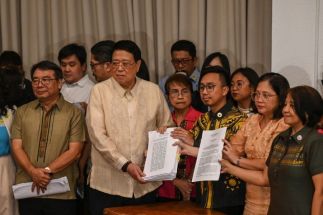"Bohol corals generate $3.4M in revenues" - UN
CEBU, Philippines - “The Bohol Coral Triangle, a major fishing ground, generates $3.4 million of revenues from fishing activities annually,” the United Nations Environment Programme reported. Apart from this, the report added, the reefs also attract tourists, another income generator for the province.
This transpired during the holding of the UN Environment Programme’s Land-Ocean Connection Conference in Manila recently.
Despite huge revenues derived from the coral reefs, perpetual destruction, either by tourists and fishermen using deleterious fishing methods, of some of the dive spots here is still unabated, according to the DENR.
DENR through the Protected Areas Wildlife Bureau (PAWB) reported that only four percent of the reefs or about 26,000 square kilometres are in excellent condition. PAWB, however, did not claim how serious are the destruction of reefs in Bohol.
Bohol Coral Triangle is located within the Bohol Marine Triangle composed of the areas of Panglao Island, where the Balicasag island dive site is; Baclayon, where the Pamilacan Island is located; and Tagbilaran, Edmundo Regadas, chief of DENR’s coastal marine division of Region 7, pointed out in an interview.
It was learned that what the Bohol Coral Triangle (BCT) generates may not be the same as what the Danajon Double Barrier Reef, also a rich fishing ground located in the northernmost of the province, as far as income is concerned (DENR report).
Risk
With this scenario (coral condition), the DENR warned that food security in the country is put at risk since the impact of deteriorating marine life “is already felt in the Philippines.”
The Department of Agriculture said that about 80 percent of the protein requirement of Filipinos is supplied by marine harvest. In Bohol, marine products are the main source of protein Boholanos, most of whom reside along 30 coastal towns.
Over-exploitation, illegal fishing practices, pollution, rising ocean temperature and acidification contribute much to the deterioration of marine harvest over the years. “Our coasts and seas have suffered heavy degradation over half a century of destructive practices,” DENR disclosed through PAWB director Mundita Lim’s presentation.
The Department of Agriculture added that the degradation is obvious as seen in the decline of fish catch, of which the commercial decreased to 16.3 percent and municipal production to 2.9 percent.
“Coral reefs are considered underwater forests because of their complex ecosystem that supports a huge amount of wildlife. They are also carbon sinks and a major mitigator of climate change.”
BEMO efforts
The need to reverse the situation is paramount so some municipalities in Bohol are maintaining and declaring their Marine Protected Areas (MPA) off-limits, while others try to establish new ones to increase fish stock and allow species to breed without interruption.
The Bohol Environment Management Office (BEMO), attached to the governor’s office, is still making rounds of inspection and conducting monitoring and evaluation efforts for upgrading the MPAs and their capability development activities. MPAs are considered as the cost-effective way of protecting the ecosystems, and also a source of livelihood, as well as visitors’ attraction, such as in Pamilacan Island, off Baclayon town.
“Of the 800 coral species in the world, 500 can be found in the Philippines, making its seas one of the most diverse in the world,” DENR pointed out. UN also reported that “healthy reefs can produce up to 35 tons of fish per square kilometer.”
Mabaw Reef
Municipal Mayor Leoncio Evasco of Maribojoc town is batting for unrelenting education and an advocacy campaign among the stakeholders to pursue environmental preservation and protection, particularly in the marine and coastal areas.
Also being pushed is the shifting of social and behavioral patterns of the stakeholders towards environmental preservation, particularly marine protection for sustainability and food security.
These are the recent concerns being considered by Mayor Evasco and RARE led by Brett Jenks, chief executive officer and president.
RARE is a “U. S. based conservation organization, working globally to equip people in the world’s most threatened natural areas with the tools and motivation they need to care for their natural resources.”
The group is supported by local counterparts, including those assisting the preservation of Mabaw Reef in the city’s coastal area. Led by Venal Edquilag, the group visited another pilot Marine Protected Area in Hambongan sanctuary of Inabanga town and the Mabaw reef.
- Latest
- Trending

















